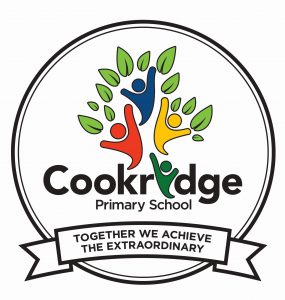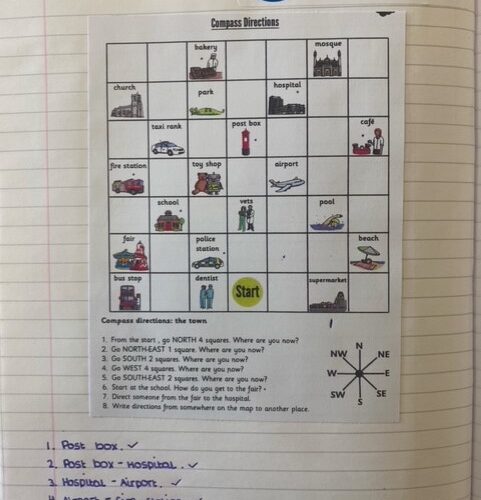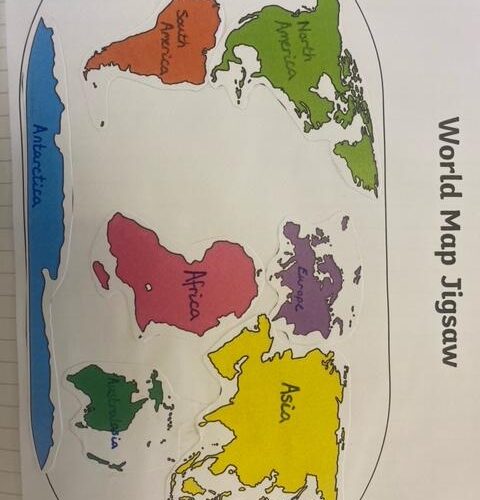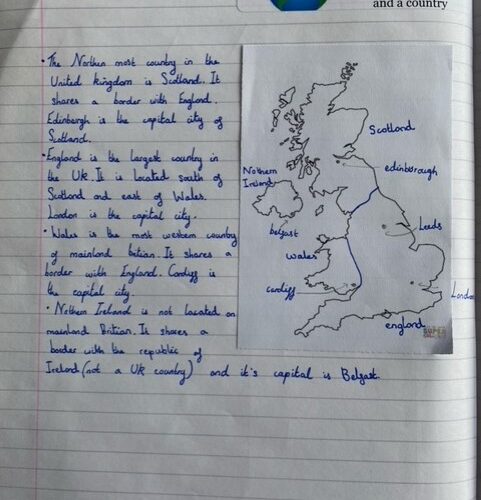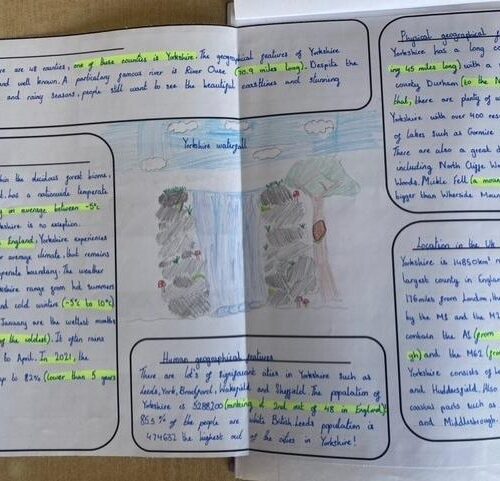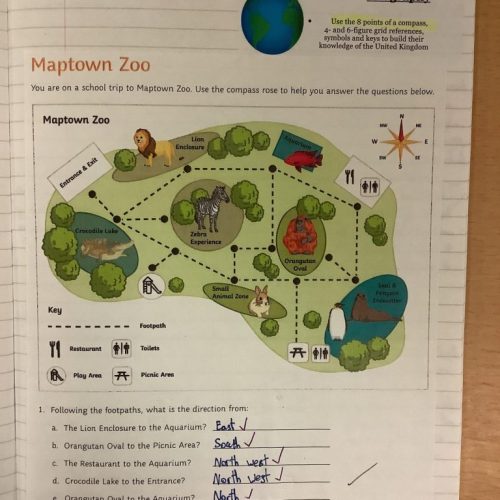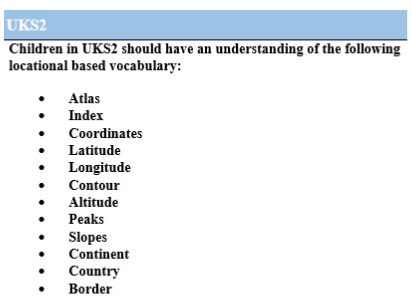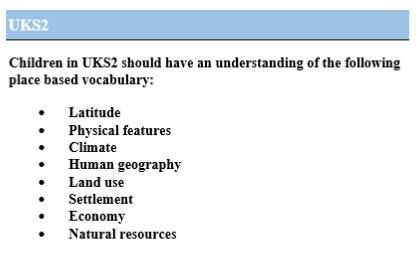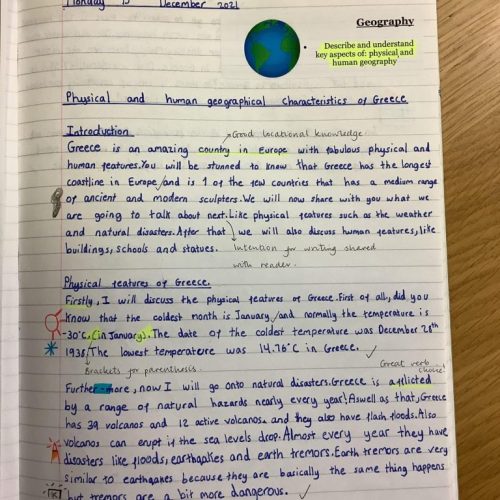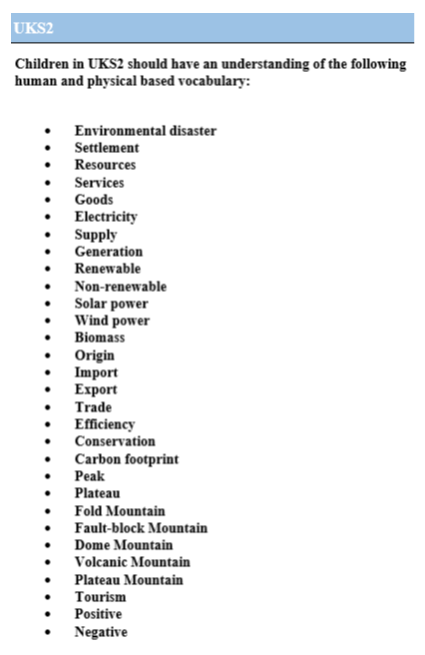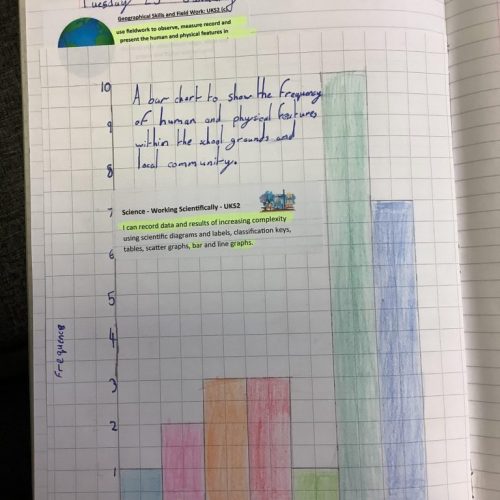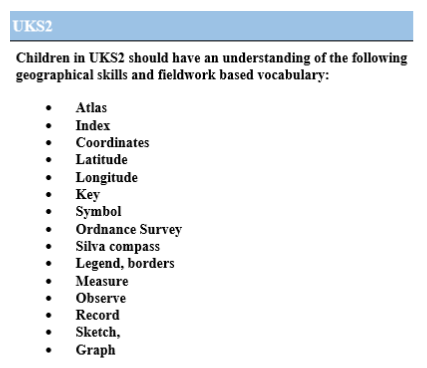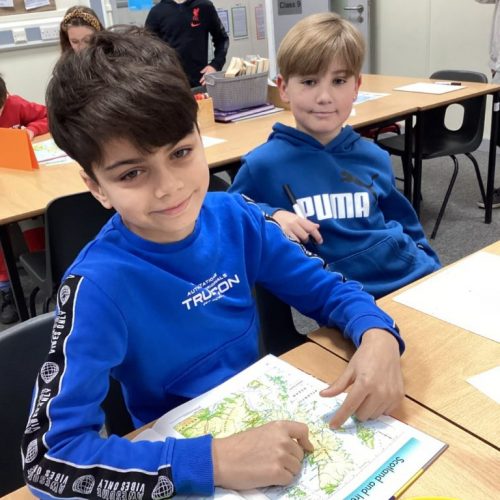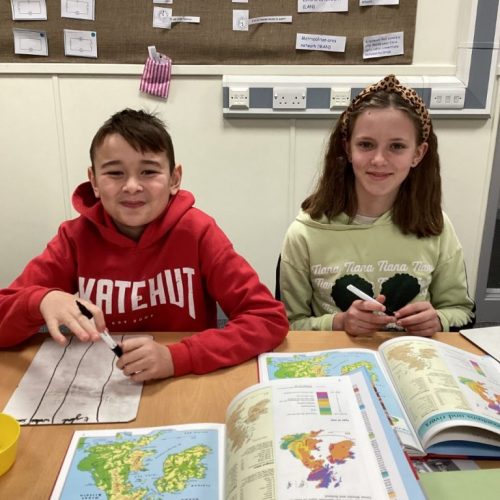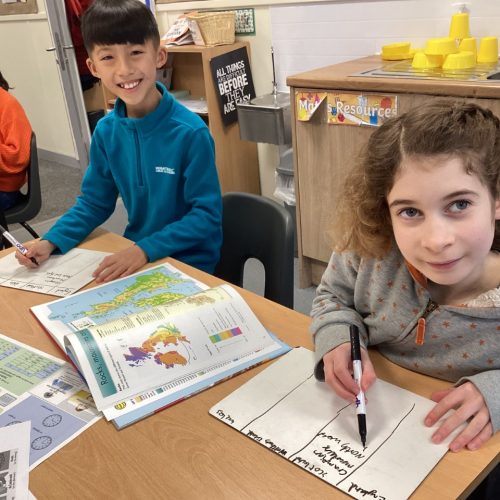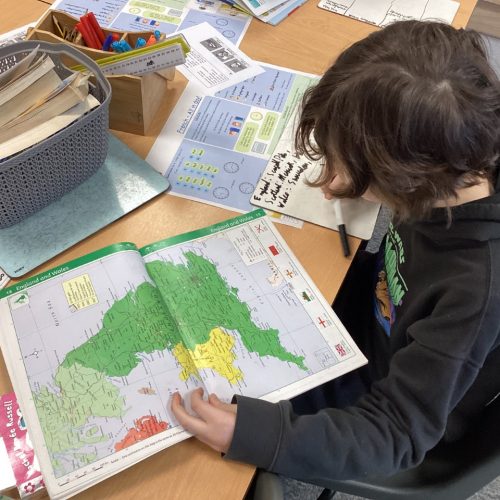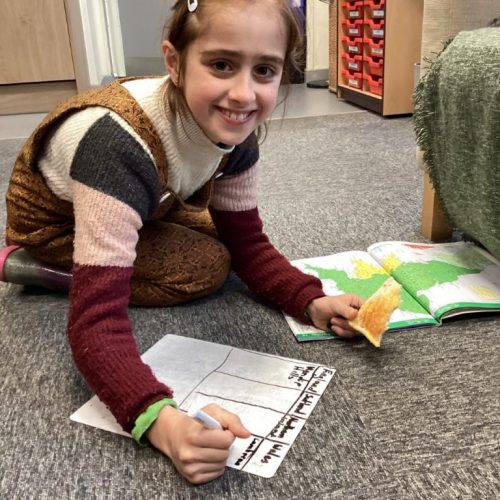| Children can: | |
| a | To know the difference between a continent and a country. |
| b | To identify some major cities around the world. |
| c | To compare and contrast human and physical characteristics of most countries. |
| d | To know what kind of living things are found in different environments around the world. |
| e | To know some examples of how land use has changed over time. |
Year 5 – Geography
YEAR 5 - Examples of 'Expected' in the core skill of - Locational Knowledge
Locational Knowledge - Core Skills
YEAR 5 - Examples of 'Expected' in the core skill of - Place Knowledge
Place Knowledge - Core Skills
| Children can: | |
| a | To understand geographical similarities and differences through the study of human and physical geography. |
YEAR 5 - Examples of 'Expected' in the core skill of - Human and Physical Geography
Human and Physical Geography - Core Skills
| Children can: | |
| a | Describe and understand key aspects of physical geography, including rivers and mountains |
| b | Describe and understand key aspects of human geography. |
YEAR 5 - Examples of 'Expected' in the core skill of - Geographical Skills and Fieldwork
Geographical Skills and Fieldwork - Core Skills
| Children can: | |
| a | use maps, atlases, globes and digital/computer mapping to locate countries and describe features studied. |
| b | use the 8 points of a compass, 4- figure grid references, symbols and key (including the use of Ordnance Survey maps) to build their knowledge of the United Kingdom and the wider world |
| c | use fieldwork to observe, measure record and present the human and physical features in the local area using a range of methods |
Fluency examples from UKS2:
